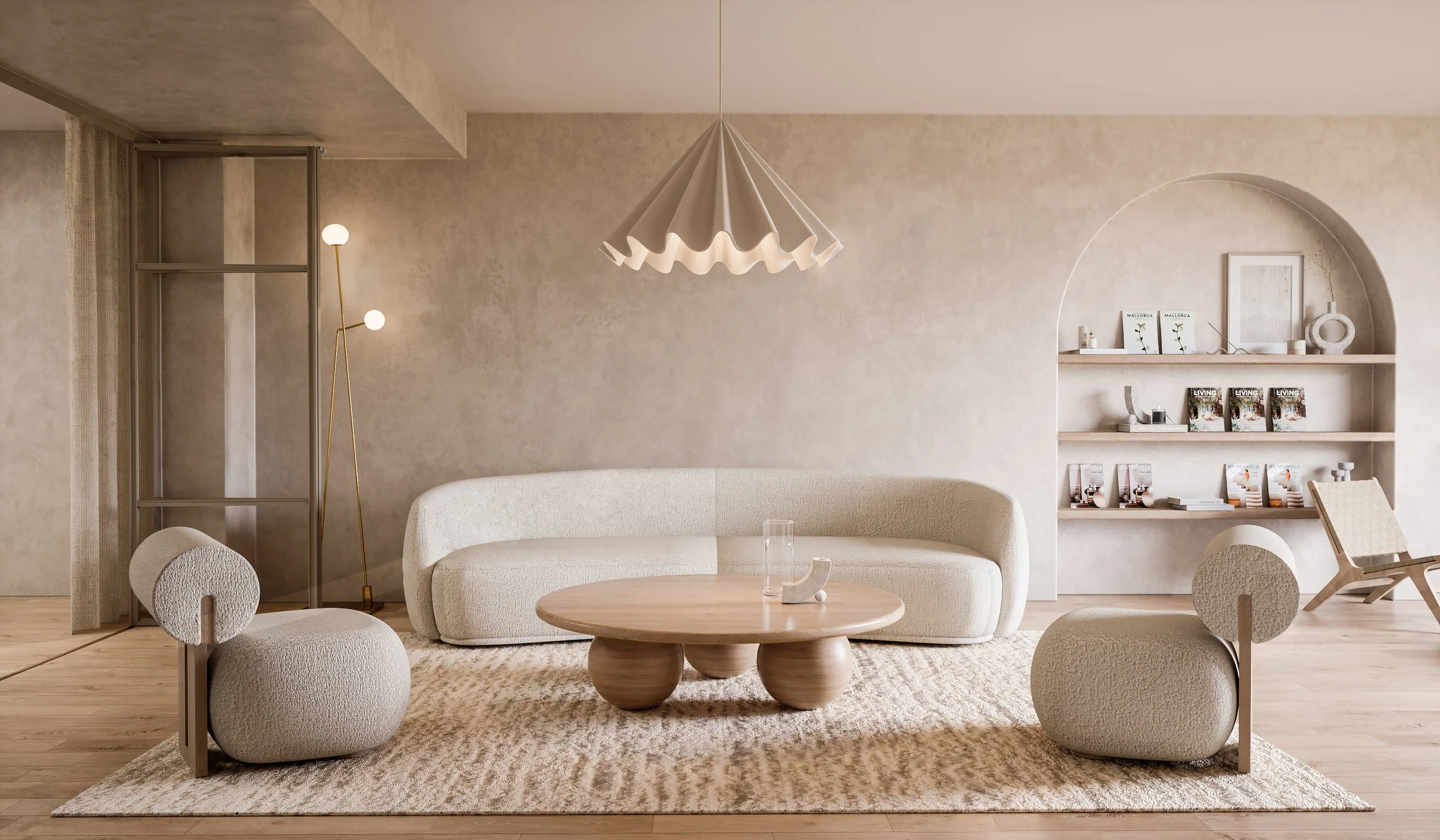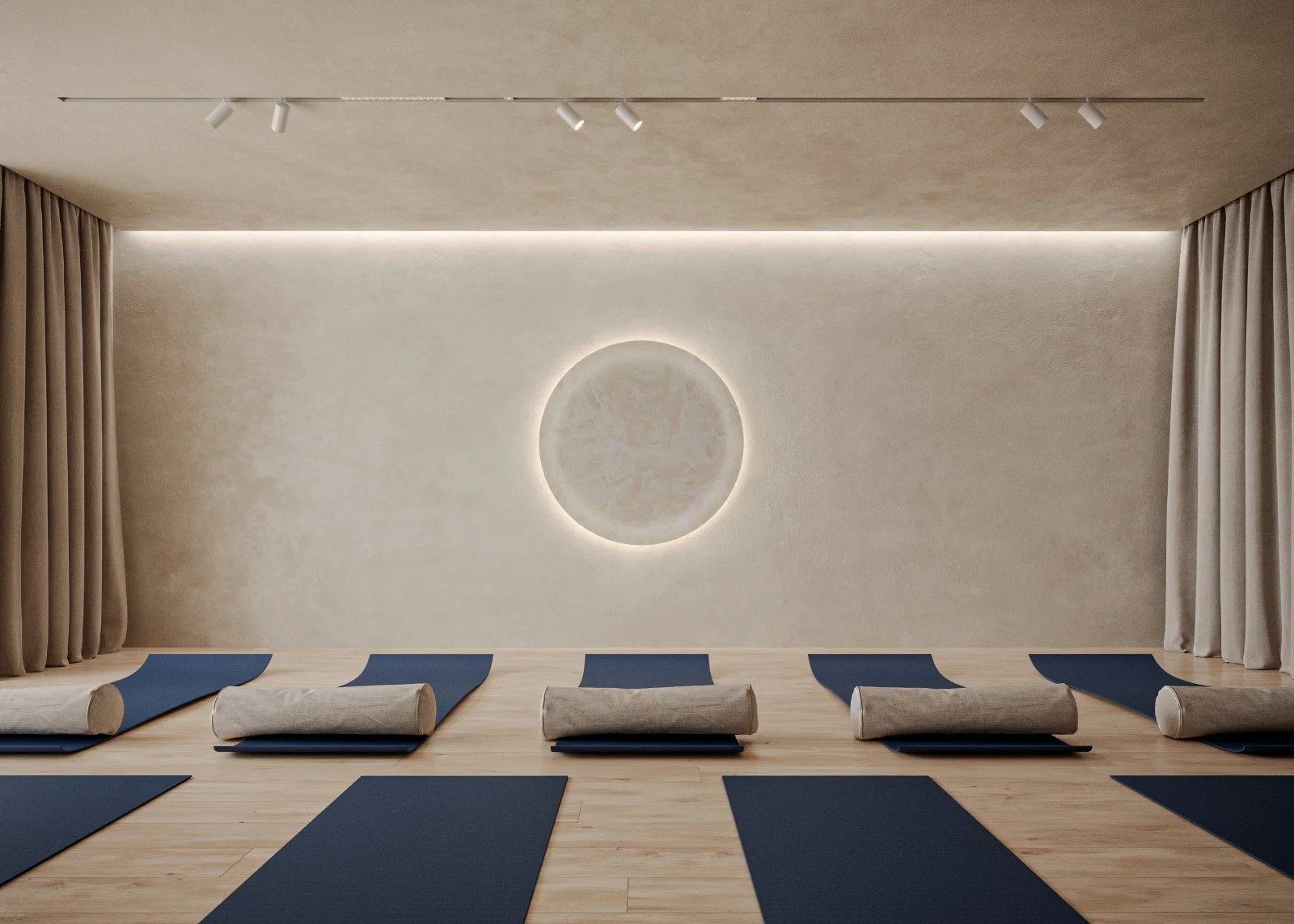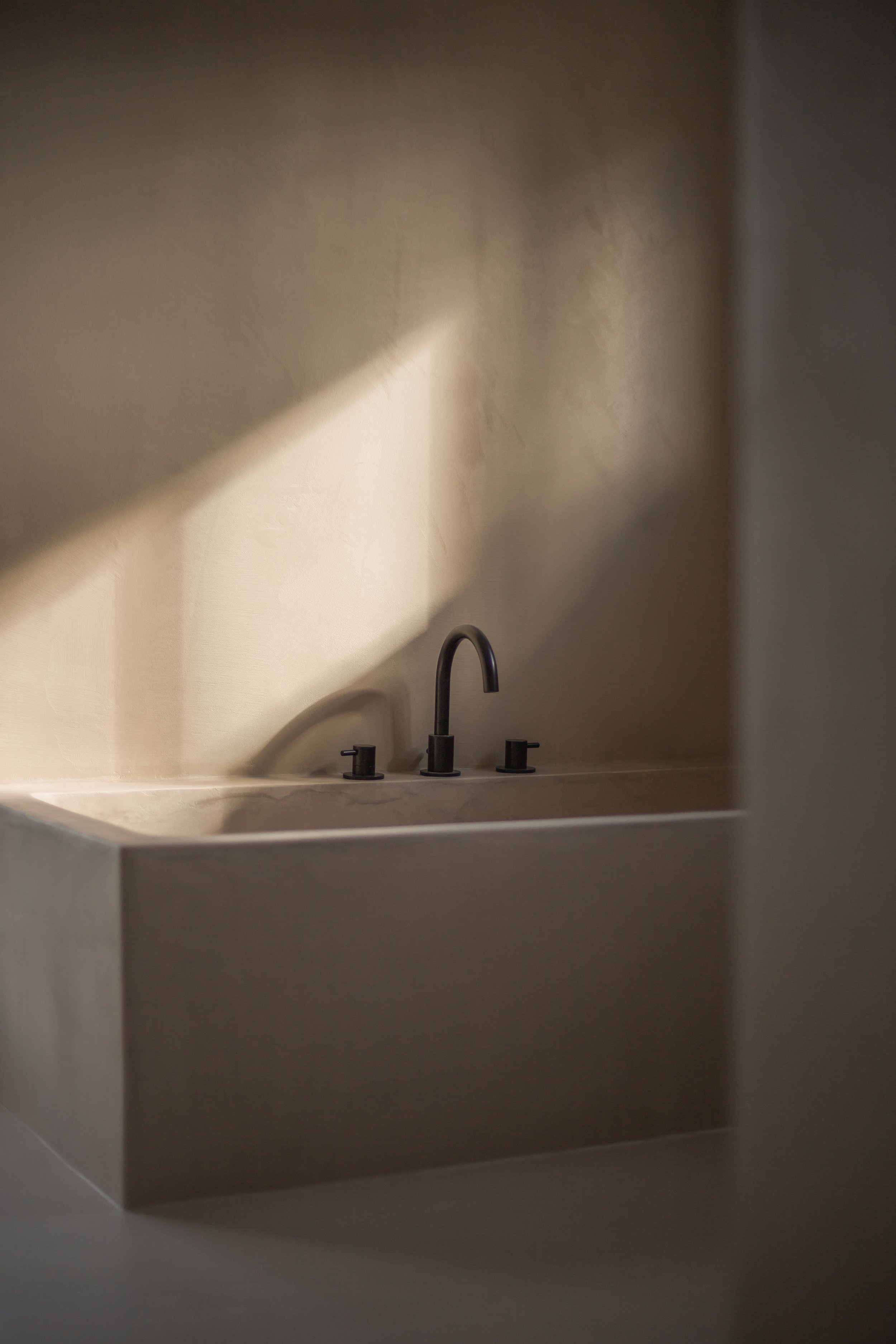Holistic design, a timeless approach to interiors
“A house is not a machine to live in. It is the shell of man, his extension, his release, his spiritual emanation.”
— Eileen Gray
Interior design is tightly connected with trends. What color palettes should we use this season, what kind of shapes are preferred over others or what textures are in and are “here to stay”. Most of the time those trends are exactly that - trends. Styles that come and go sometimes in the time lapse of not even a year. We see this in many other fields as well - fashion, food, and even general attitudes. However, this approach that lives in the notion of constant change does not seem very sustainable.
The vast presence of images at our disposal has an important hold on us and our aesthetics, choices and even our day to day activities. Who doesn’t have a Pinterest board nowadays labelled “My Dream Living Room” or “Ideas for Home Renovation”. While these things can inspire us, sometimes they tend to push us in a direction of ever looking and ever desiring, leaving us with a feeling of dissatisfaction about our current environment. This is where holistic design as a philosophy comes in.
The idea of the holistic approach is to take into account the relationship between the individual and their environment. In interior design, this means creating spaces that not only look beautiful, but also promote well-being and sustainability. Here, what the latest trend in furniture or color is becomes an obsolete idea.
So what steps could we take to distance ourselves from the superfluous and ever changing styles and focus more onto a timeless and sustainable way of creating interiors? In this story, we will explore some of the practices of the holistic approach that will help us create spaces that can nourish us and expand our awareness through the discovery of subtle possibilities.
Natural Materials
One of the key elements of holistic design is the use of natural materials, such as wood, stone, and or natural fabrics like linen and cotton. These materials bring a sense of calm and comfort to the space, while also improving indoor air quality. Their added benefit of being sustainable and biodegradable makes them a very good choice for those who want to reduce their impact on the environment. In addition, natural materials can be sourced locally, reducing the carbon footprint of your interiors.
As interior designers based in Mallorca, it's almost intuitive to want to create something in tune with life on the island. This could mean incorporating terracotta tiles, natural stone or wooden beams.
Rhythm & Light
In holistic design, it’s important to create a cohesive look throughout the space. Using similar materials, colors, and patterns in each room helps to achieve this sense of unity. This concept is known as “rhythm” in interior design, and it refers to the repetition of similar elements to create a cohesive look. Paying attention to lighting is also crucial, as the right lighting can create a cozy and inviting atmosphere. Natural light is ideal, but if this isn’t possible, LED lights or warm white light bulbs can also create a harmonious environment. The use of dimmer switches and task lighting can also enhance the ambiance of your space, making it feel more intimate and relaxing.
“In holistic interior design, every element is considered, from the lighting to the materials used, to create a harmonious and sustainable environment.”
Colors
The psychology of color is a fascinating subject that has been studied for centuries, with roots dating back to ancient civilizations such as the Egyptians, Greeks, and Romans. It was Swiss psychologist Carl Jung who brought the concept of color psychology to the forefront of modern thought in the early 20th century. He believed that colors could be linked to human emotions and behavior, and that they had a powerful influence on our psychological state.
In interior design, and especially within the holistic approach, the psychology of color is a crucial consideration. The colors we choose for our living spaces can have a profound impact on our mood, emotions, and well-being. Understanding the psychological effects of different colors is essential for creating interiors that are both aesthetically pleasing and emotionally nurturing.
With this in mind, let's explore some of the most commonly used colors in interior design and the emotions they evoke.
Green
Green is often associated with nature and is said to promote a sense of calm. It can also help reduce stress levels, as we associate it with the natural world. In interior design, green can be used as a wall color, or it can be incorporated through the use of plants or other natural elements.
Blue
Blue is thought to be calming and soothing, making it a great choice for bedrooms and bathrooms. It's a color that's believed to have a positive impact on the mind and body, a relationship that yoga and meditation practices explore deeply, making it also a wonderful choice for yoga studios and spa centers. Blue can be used in a variety of ways, from soft pastel shades to bold, deep blues.
Neutral shades
Neutral shades, such as beige, gray, and taupe, are popular in holistic design as they provide a sense of calm and balance. They can also serve as a neutral background, allowing other elements in the space, such as furniture and artwork, to stand out. In our homes, neutral shades can be used as wall colors or incorporated through the use of natural materials, such as wood and stone.
Pastels
Pastels, such as pale ochre, light blue, and mint green, are soft and calming, making them ideal for creating a relaxing environment. They can also evoke feelings of warmth and comfort, making them suitable for living areas. Pastels incorporated through the use of soft furnishings, such as cushions and throws.
Plants & other greens
Bringing elements of the outside in is another important aspect of holistic design. Adding plants and other natural elements to your space can create a connection between the indoors and the outdoors, helping to bring a sense of peace and serenity. You can simply add a few potted plants to create this effect. Plants not only add to the aesthetics of your space, but also help to improve air quality and reduce stress levels.
Having a small vegetable garden in your home can bring numerous benefits to your life. Whether you have a large garden or just a small balcony, growing your own food can also be a wonderful way to connect with nature. It provides you with fresh, nutritious produce right at your doorstep and helps create a more sustainable lifestyle. Gardening can also be a great form of exercise, helping to improve your physical health and reduce stress levels. And finally, there is nothing better than the sense of pride and accomplishment as you watch your plants grow from seeds to ready to eat produce.
“Interior design is the art of creating a space that tells a story, evokes emotions and enhances the way we live.”
Furniture & decoration
Comfortable furniture is a must in holistic design, so choose pieces that are both stylish and comfortable. Make sure they’re made from natural materials, to continue the theme of bringing the outside in. Furniture should also be ergonomically designed, to promote comfort and reduce physical strain. Consider adding a chaise lounge or a cozy armchair to create a comfortable reading nook, or a set of soft cushions for added comfort on your sofa.
Don’t forget to add personal touches to your space. Family photos, artwork, or other sentimental items can make your space feel truly like home. These elements help to create a sense of warmth and comfort, and they also provide a great opportunity to express your personality and style.
Incorporating second-hand furniture or decorative items not only adds a touch of authenticity to your space, but it also helps preserve the environment by giving these items a new life.
Understanding that the environments in which we live have an impact on how we live and feel, allows us to approach interior design holistically. What makes this a sustainable and timeless practice in the world of architecture and design is the fact that it takes inspiration from its close surroundings. What works in a Mediterranean climate might not be what works in a country with a colder weather. The materials we find here might not be the ones we will use for a project in Sweden or in Australia, therefore no two homes are going to be exactly the same. And this is what creates the uniqueness of this approach - a palette with a variety of colors, textures and materials that all work towards the same goal - a mindfulness that everything is connected. The individual and the world. As our mind, body and soul connection strengthens, supported by the interiors tailored to our needs, we become more in tune with nature and our well-being and ease of living improves.
We hope these tips have inspired you to incorporate a holistic approach into your interior design. If you have any questions or would like to learn more, feel free to get in touch with us. We’d love to help you create the space of your dreams.


